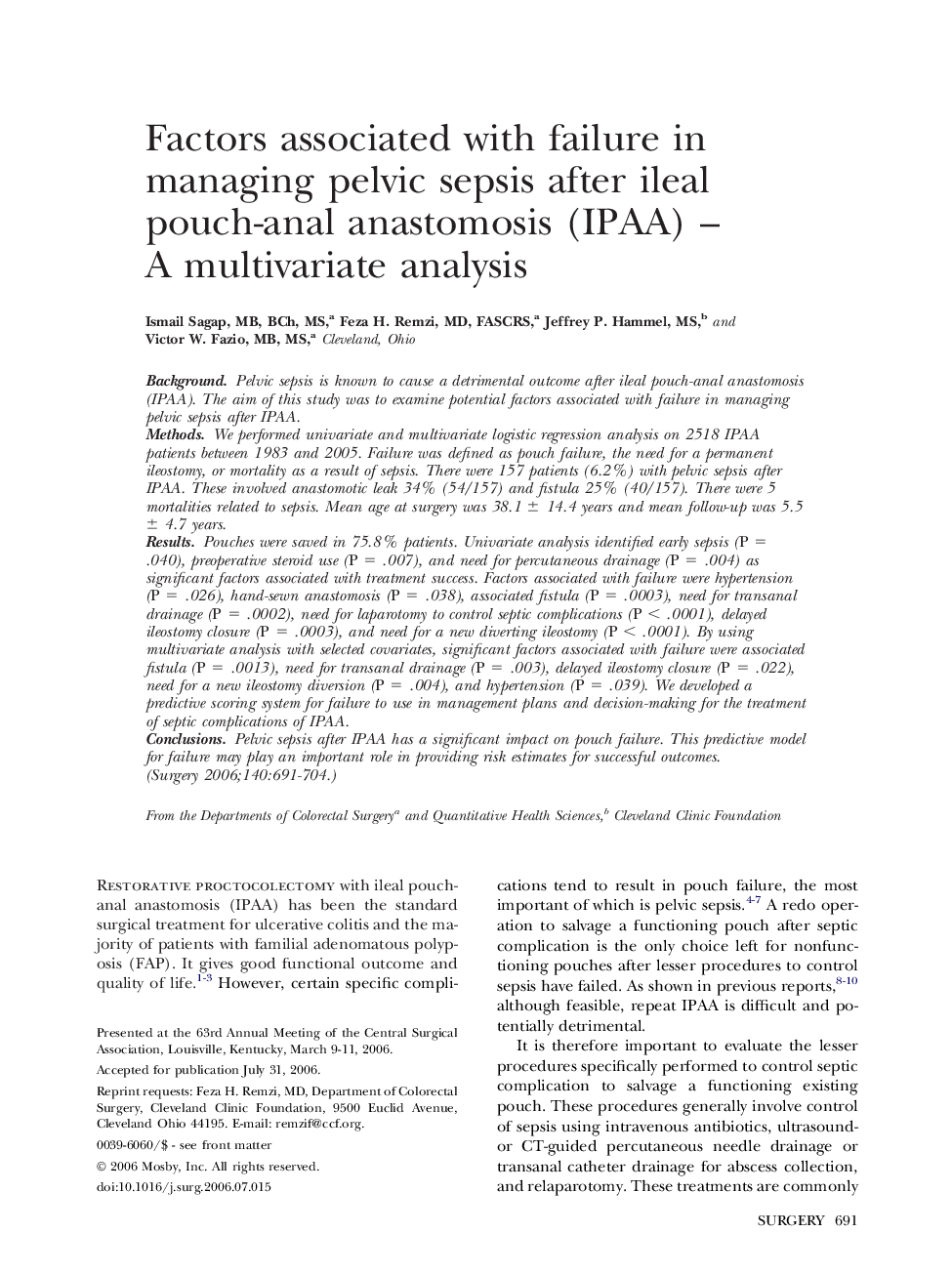| کد مقاله | کد نشریه | سال انتشار | مقاله انگلیسی | نسخه تمام متن |
|---|---|---|---|---|
| 4309984 | 1289330 | 2006 | 14 صفحه PDF | دانلود رایگان |

BackgroundPelvic sepsis is known to cause a detrimental outcome after ileal pouch-anal anastomosis (IPAA). The aim of this study was to examine potential factors associated with failure in managing pelvic sepsis after IPAA.MethodsWe performed univariate and multivariate logistic regression analysis on 2518 IPAA patients between 1983 and 2005. Failure was defined as pouch failure, the need for a permanent ileostomy, or mortality as a result of sepsis. There were 157 patients (6.2%) with pelvic sepsis after IPAA. These involved anastomotic leak 34% (54/157) and fistula 25% (40/157). There were 5 mortalities related to sepsis. Mean age at surgery was 38.1 ± 14.4 years and mean follow-up was 5.5 ± 4.7 years.ResultsPouches were saved in 75.8% patients. Univariate analysis identified early sepsis (P = .040), preoperative steroid use (P = .007), and need for percutaneous drainage (P = .004) as significant factors associated with treatment success. Factors associated with failure were hypertension (P = .026), hand-sewn anastomosis (P = .038), associated fistula (P = .0003), need for transanal drainage (P = .0002), need for laparotomy to control septic complications (P < .0001), delayed ileostomy closure (P = .0003), and need for a new diverting ileostomy (P < .0001). By using multivariate analysis with selected covariates, significant factors associated with failure were associated fistula (P = .0013), need for transanal drainage (P = .003), delayed ileostomy closure (P = .022), need for a new ileostomy diversion (P = .004), and hypertension (P = .039). We developed a predictive scoring system for failure to use in management plans and decision-making for the treatment of septic complications of IPAA.ConclusionsPelvic sepsis after IPAA has a significant impact on pouch failure. This predictive model for failure may play an important role in providing risk estimates for successful outcomes.
Journal: Surgery - Volume 140, Issue 4, October 2006, Pages 691–704